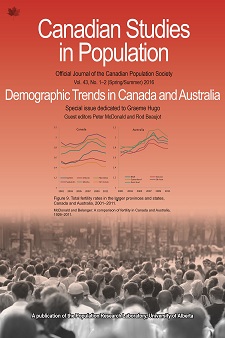Epidemiologic Transition in Australia – the last hundred years
DOI:
https://doi.org/10.25336/P6VP5JKeywords:
Mortality, trends, decomposition, life expectancy, differentials, AustraliaAbstract
Mortality change in Australia since 1907 is analysed in the light of Epidemiologic Transition theory. Trends in life expectancy by sex and the sex difference, are examined at ages 0, 50, 65 and 85 years. Trends in mortality by major cause of death are broadly related to the stages of the Epidemiologic Transition, and a decomposition of changes in life expectancy by age and cause of death is used to further elaborate on the progression through three stages, the Age of Receding Pandemics, the Age of Degenerative and Man-Made Diseases and the Age of Delayed Degenerative Diseases. A consideration of temporal changes in age patterns of mortality decline includes a focus on infant mortality, the accident hump and mortality at older ages. In the early decades of the twentieth century, Australia was a leader in the Epidemiologic Transition, but had lost this advantage by 1950. Differentials by state/territory, indigeneity and socio-economic factors identify the leaders and laggards in the transition.
Downloads
Published
Issue
Section
License
Copyright (c) 2019 Heather Booth

This work is licensed under a Creative Commons Attribution 4.0 International License.
The following copyright statement applies to content published in Volumes 1 - 45 of Canadian Studies in Population.
Authors retain copyright and grant the journal right of first publication with the work simultaneously licensed under a Creative Commons Attribution License that allows others to share the work with an acknowledgement of the work's authorship and initial publication in this journal.
Authors are able to enter into separate, additional contractual arrangements for the non-exclusive distribution of the journal's published version of the work (e.g., post it to an institutional repository or publish it in a book), with an acknowledgement of its initial publication in this journal.
Authors are permitted and encouraged to post their work online (e.g., in institutional repositories or on their website) prior to and during the submission process, as it can lead to productive exchanges, as well as earlier and greater citation of published work (See The Effect of Open Access).



